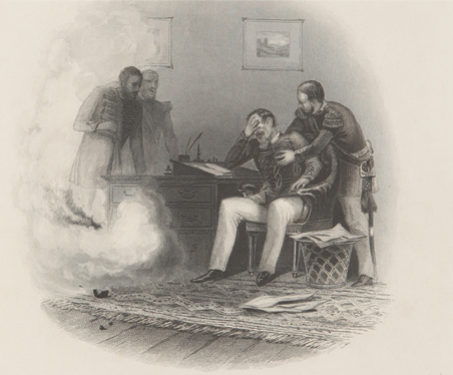

The History of the Indian Mutiny
This book gives a detailed account of sepoy insurrection in India along with a concise history of the military events that led to the consolidation of British Empire in India.
Museum objects, artifacts, and archival items from the Sarmaya collection.

This book gives a detailed account of sepoy insurrection in India along with a concise history of the military events that led to the consolidation of British Empire in India.
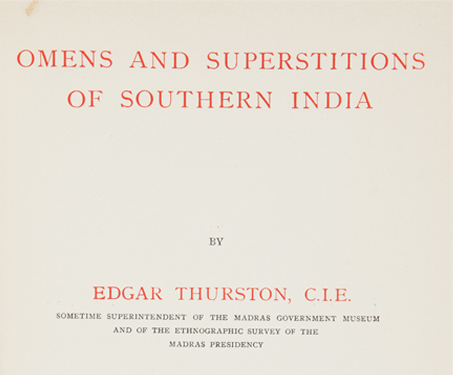
This book deals mainly with some aspects of what may be termed the psychical life of the inhabitants of the Madras Presidency, and the Native States of Travancore and Cochin. There are elaborate descriptions of snake worship, magic and charms.
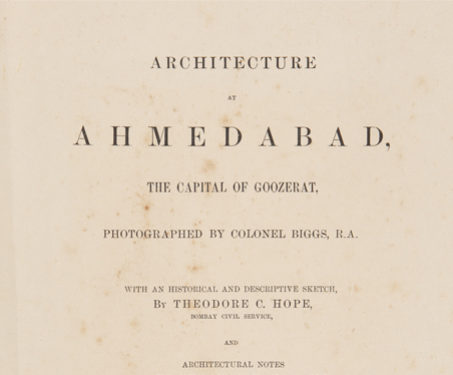
An important, early and rare photographically-illustrated record of the art and architecture of western India with special emphasis on Ahmedabad, the capital of Gujarat.
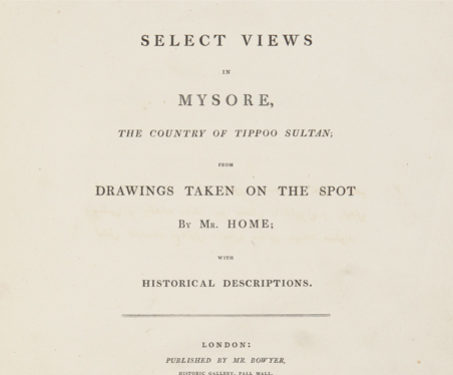
This volume is a historical account of the British officers and soldiers who fought against Tipu Sultan and compelled him to relinquish half his dimensions. The engravings published in the book focus on the battle grounds where the forces of Mysore defended against the British. Robert Home, a portrait artist and water colourist from London… Read more »
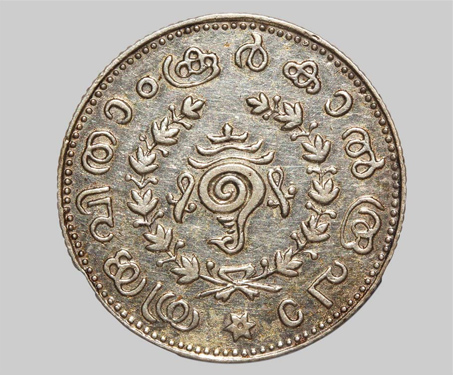
Bala Rama Varma was the last ruling Maharaja of the princely state of Travancore until its annexation by independent India in 1949. This silver coin issued under his name has the royal emblem of the conch on the obverse side, with a legend in Malayalam translating to “Travancore Half Rupee Chitra” encircled by an olive… Read more »

This is a silver coin issued when Goa was a Portuguese colony. The obverse reads “estado da India” meaning the “State of India” and states the value of the coin: “1/2 rupia”—rupia was the currency of Portuguese India from the late 17th century till the state dissolved. The emblem shows the Portuguese Coat of Arms,… Read more »
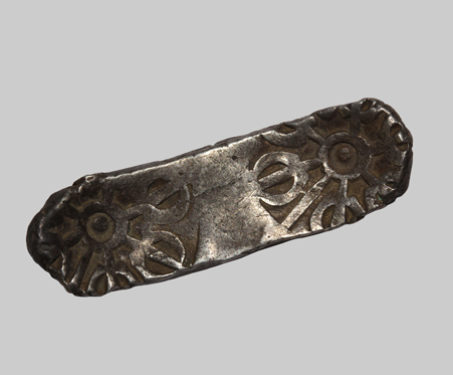
This is a silver bent-bar and punch-marked coin from the janapada (Vedic era) of Gandhara, one of the biggest kingdoms in ancient India. The term shata-mana translates to a 100 ‘manas’, a unit of measurement, and these were in circulation in the 6th century BCE. The characteristic feature of all Gandharan shatamanas was the six-armed… Read more »
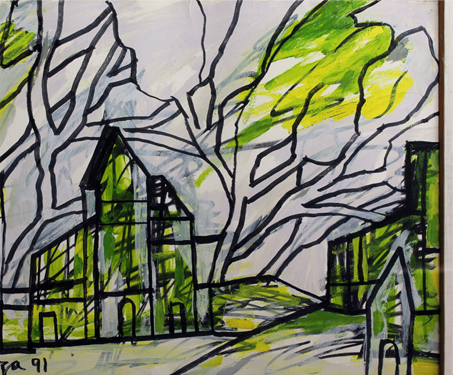
This image shows a townscape interspersed with buildings and trees. The primary colours here are yellow, green, black and ash – while the signature ‘Souza-esque’ style of blunt, cruel humour is lent by the powerful strokes of green and yellow, fierce lines and bold swaths of ash. Souza believed that art offered the only respite… Read more »
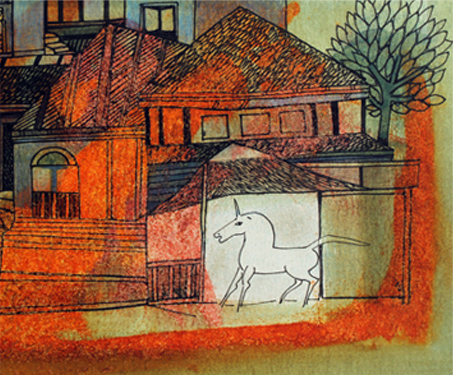
This watercolour work by artist Badri Narayan (1929-2013) depicts a cluster of houses with a white unicorn in the foreground. Badri Narayan was entirely self-taught and his art betrays a deeply introspective gaze. All of his work was in some way or the other an exploration of the self. He was inspired by various movements… Read more »
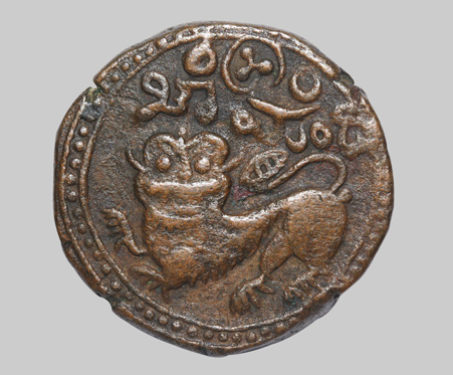
This is a copper coin issued by Krishnacharya Purniya who was the regent (or Dewan) of the Mysore monarch Krishnaraja Wodeyar. On the obverse side is the depiction of the “Sardula” – a mythological beast with leonine features and horns, and an inscription in Kanarese in two registers. On the topmost register of this side… Read more »
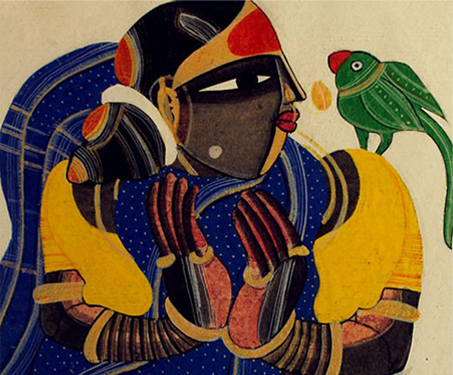
This particular painting of a woman with a parrot perched on her shoulder is perhaps inspired from the sculptures of ‘alasa kanyas’ popular in medieval Indian temples. Thota Vaikuntam is known to capture the simple lifestyle of villagers through his paintings. He depicts scenes of paddy fields, toddy pots on shoulders of men, household chores,… Read more »
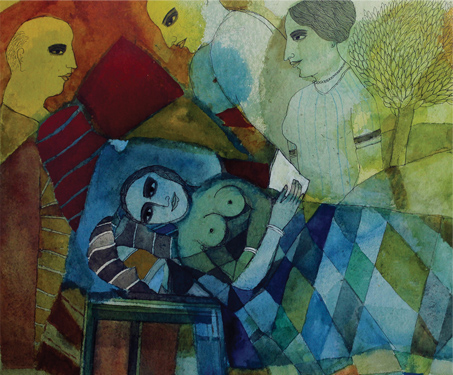
This watercolour depicts a woman on a bed holding a letter in her hand. She’s likely dreaming of receiving a letter from a loved one. Around her hover three other figures: two men and one woman. The dreamlike environment is further enhanced by bold washes of watercolour that run all around the central narrative. Badri… Read more »
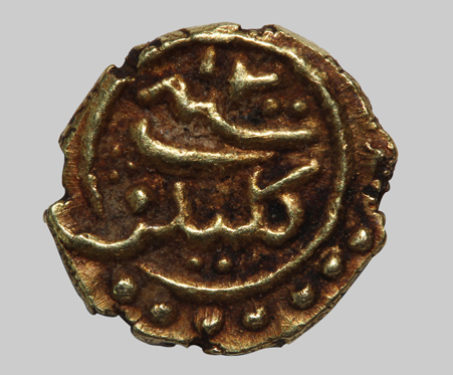
This is a gold fanam coin issued by Tipu Sultan in the year 1786. On the obverse side is inscribed the Persian letter “H” (for Haider Ali, Tipu’s father) inside a circle and dotted border. On the reverse side is inscribed the mint name, Calicut, in Persian and the date of issue.
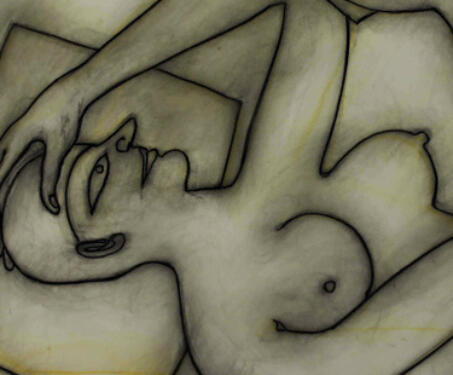
The subject of this painting is a semi-nude female figure lying on her bed with a love letter. But for the breasts, there would be no way to identify the gender of the subject. The artist has whittled away all extraneous details, not to mention colours, to present a languid, wistful mood. Jogen Chowdhury’s nudes… Read more »
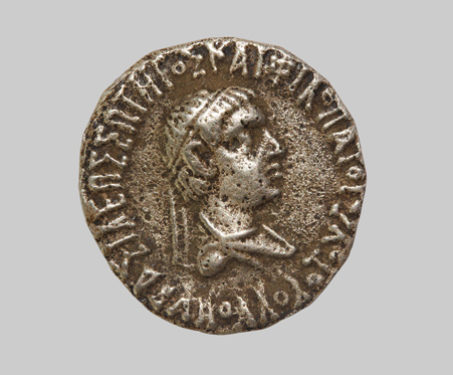
This silver drachm carries the kingly profile of Apollodotus II, who reigned east and west Punjab aka Taxila in the waning days of the Indo-Greek kingdom between 80 and 65 BC. Indo-Greek coins were of three types: stater (gold), drachm (silver) and copper (chalcon). The front of the coin carried the bust of the ruler… Read more »
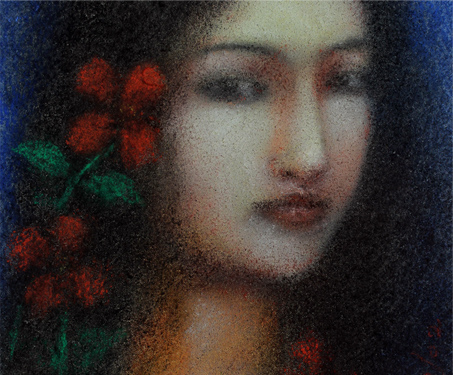
Suhas Roy’s female forms inhabit a dreamlike space between sensual and innocent. This is one such work from his popular series Radha. Contrary to the popular imagination of a Radha as an icon, Roy’s Radha is a melancholy, yet graceful figure. Suhas Roy’s art works primarily focus on the female face and form that are… Read more »
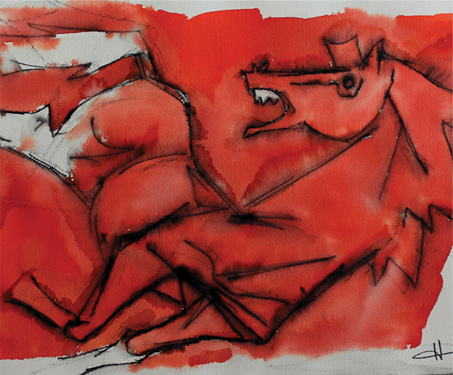
A self-taught artist, born in the small town of Pandharpur in Maharashtra, MF Husain has had an extraordinary career. It began with painting cinema posters and toys in Bombay and only really took off after he became a member of the PAG. His primary pictorial concern was to imagine a secular modern Indian art, to… Read more »
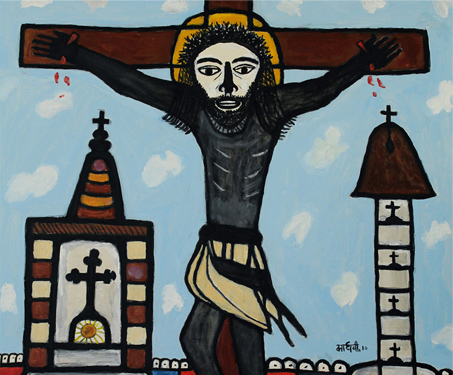
In this painting, the artist depicts Jesus crucified in a traditional folkish set-up. Two goats look up at the cross, while architectural elements of what look like churches already seem to emerge in the backdrop. Madhvi Parekh got much of her exposure to art from her husband Manu Parekh who studied at the J.J. School… Read more »
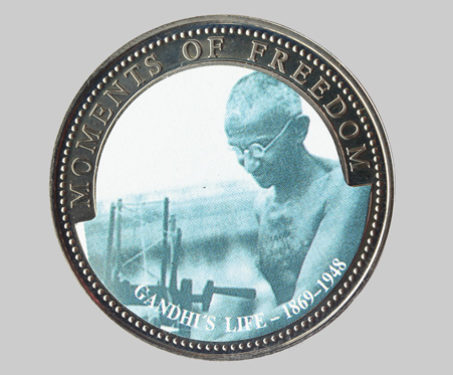
This is a copper and nickel coin from the Republic of Liberia issued to honour Mahatma Gandhi. On the obverse side is the national emblem of Liberia along with the issuing year 2001, and an inscription detailing the value of the coin and the issuing country. On the reverse side is an image of Gandhi… Read more »
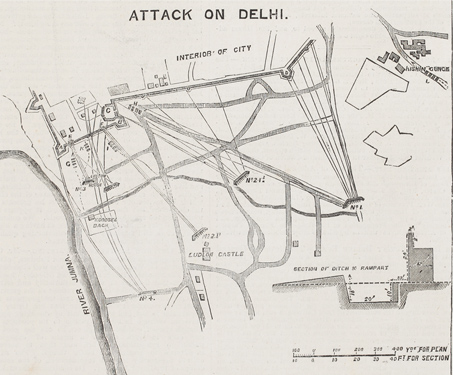
This is a print of the map showing the plan of the British attack on the city of Delhi, during the Uprising of 1857. Various clusters of directional lines with coordinates mark areas where the British troupes advanced. Landmarks such as the Landlow Castle and the ‘rampart’ hint that the advance is from the Ridge… Read more »